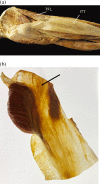Fascial nomenclature: Update on related consensus process
- PMID: 31183880
- PMCID: PMC6852276
- DOI: 10.1002/ca.23423
Fascial nomenclature: Update on related consensus process
Abstract
The term fascia is increasingly used not only by anatomists but also by other professionals and authors in different health-oriented fields. This goes along with an inconsistent usage of the term, in which many different tissues are included by different authors causing an increasing amount of confusion. The Fascia Research Society acted to address this issue by establishing a Fascia Nomenclature Committee (FNC) with the purpose of clarifying the terminology relating to fascia. This committee conducted an elaborate Delphi process to foster a structured consensus debate among different experts in the field. This process led to two distinct terminology recommendations from the FNC, defining the terms "a fascia" and "the fascial system." This article reports on the process behind this proposed terminology as well as the implications for inclusion and exclusion of different tissue types to these definitions. Clin. Anat. 32:929-933, 2019. © 2019 The Authors. Clinical Anatomy published by Wiley Periodicals, Inc. on behalf of American Association of Clinical Anatomists.
Keywords: Delphi technique; connective tissue; fascia; nomenclature; terminology.
© 2019 The Authors. Clinical Anatomy published by Wiley Periodicals, Inc. on behalf of American Association of Clinical Anatomists.
Figures


References
-
- Adler M, Ziglio E, (eds.). 1996. Gazing into the Oracle: The Delphi Method and its Application to Social Policy and Public Health. London: Kingsley Publishers.
-
- Adstrum S, Hedley G, Schleip R, Stecco C, Yucesoy C. 2017. Defining the fascial system. J Bodyw Mov Ther 21:173–177. - PubMed
-
- Benetazzo L, Bizzego A, De Caro R, Frigo G, Guidolin D, Stecco C. 2011. 3D reconstruction of the crural and thoracolumbar fasciae. Surg Radiol Anat 33:855–862. - PubMed
MeSH terms
LinkOut - more resources
Full Text Sources

